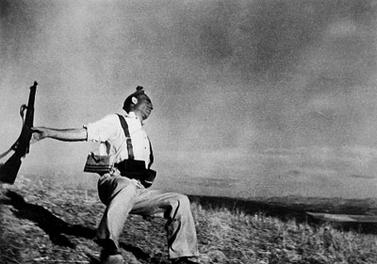Robert Capa and Tony Vaccaro were both photojournalists during world war 2. Robert Capa worked for life magazine and was sent on assignments to get photos. Capa's work is regarded amongst the best of war photographers due to how close he managed to get to the action. In 1943 Robert Capa went to Sicily with American Troops to capture the action of America trying to free it of German occupation, the pictures show the Sicilian population's sufferings under German bombing and their happiness when American soldiers arrive. Tony Vaccaro was an American solider in Europe in 1944. He was on the front lines and took some of the most shocking and horrifying pictures of world war 2, some of the photos where destroyed by his officers because they showed a side of the war that the army didn't want the public to see. The main difference between these two prominent war photographers was Robert Capa could pick and choose when he went to photograph the war therefore he only saw and portrayed one side of the conflict, In essence his pictures almost glorified the Germans loses and so the photos he took only showed the public that the Americans were slaughtering the Germans and not portraying the reality that America too was taking heavy loses; this is where Tony Vaccaro's photography was different, his pictures portrayed the harsh reality of war, from comrades dying to the poor quality of life the soldiers had to live.
Robert Capa- Loyalist Militiaman at the Moment of Death, Cerro Muriano, September 5, 1936

Tony Vaccaro- Dead German Solider

Eddie Adams
Eddie Adams was a war photographer. He photographed 13 different wars in his career, his most prominent image 'Saigon Execution' was taken during the Vietnam war. His photo of the execution in 1968 was one of the most shocking war photos ever shown to the public. The picture features a general shooting a prisoner without trial. This shocked and appalled people because this was against basic human rights; The photo was more shocking for the general public than footage of the execution because the photograph brings out emotion furthermore the picture shows another side of war to public that they had never seen before as it portrayed a complete disregard to people's rights. The photo itself could be considered only a 'half truth' to the event that occurred, its a still, capturing the moment; but that moment can be deceptive and misleading.
Eddie Adams- Saigon Execution

No comments:
Post a Comment